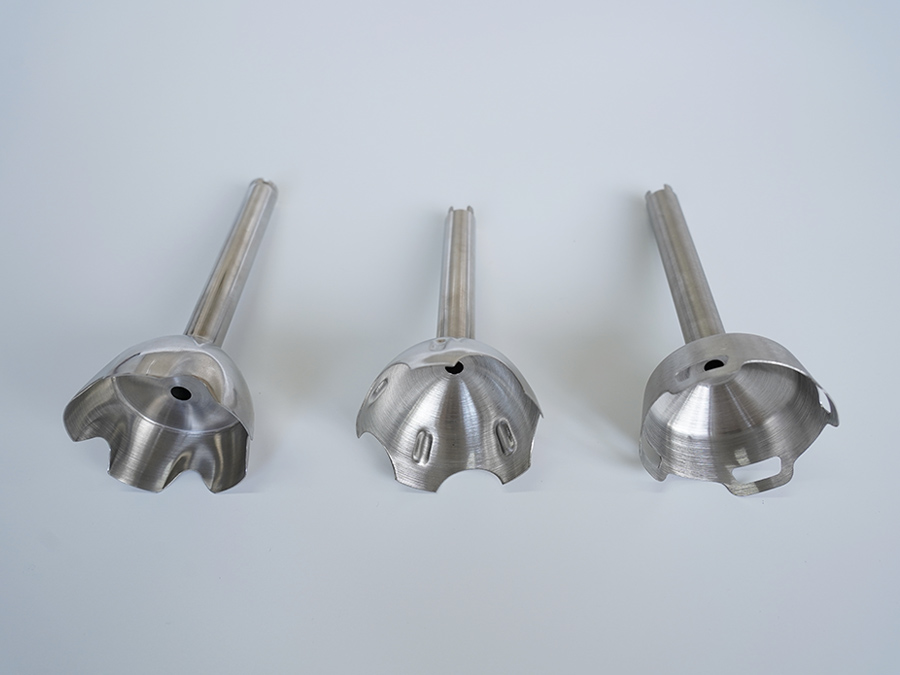
 Home > News
> News Information
Home > News
> News Information
The process of metal stretching parts should be combined with the actual situation, comprehensively considered from the aspects of quality, strength, environment, production, etc., and a reasonable process plan should be selected. On the basis of ensuring that the production meets the requirements proposed in the drawings, the process investment should be minimized as much as possible.
Types and process requirements of metal stretching parts technology:
1、 Types of metal stretching process
1. Cylinder stretching: Flange cylinder stretching. The flange and bottom are both straight faces, the cylinder is axisymmetric, and the deformation is uniform on the same circumference. The blank on the flange undergoes deep drawing deformation.
2. Elliptical stretching: The blank on the flange undergoes stretching deformation, but the amount and ratio of deformation change accordingly. The larger the curvature, the greater the deformation of the blank; On the contrary, the smaller.
3. Rectangular stretching: A low rectangular component formed by a single stretch. The tensile resistance at the rounded corners of the flange deformation zone during stretching is greater than that at the straight edges, and the degree of deformation at the rounded corners is greater than that at the straight edges.
4. Mountain shaped stretching: During the process, the side walls are suspended and the mold is only attached after the molding is completed. The deformation characteristics of different parts of the sidewall during the forming process are not completely the same.
5. Hill shaped stretching: The blank deformation of the hill shaped cover plate during the forming process is not a simple stretching deformation, but a composite forming with both stretching and bulging deformation.
6. Half spherical stretching with flange: When the spherical part is stretched, the blank partially contacts the top of the convex mold sphere, while the rest is mostly in a suspended state.
7. Flange stretching: Perform shallow stretching on the stretched flange section. Its stress-strain situation is similar to that of compression flanging.
8. Edge stretching: Re stretch the flange part in an angular shape, requiring good material deformation.
9. Deep stretching: It can only be completed after two or more stretches. The wide flange stretching part is stretched to the desired flange diameter during the first stretching, and the flange diameter remains unchanged during subsequent stretching.
10. Cone stretching: Due to the large degree of deep deformation, deep cone parts are prone to local excessive thinning or even rupture of the billet, requiring multiple transitions to gradually form.
11. Rectangular re stretching: The deformation of high rectangular parts formed by repeated stretching is not only different from that of deep cylindrical parts, but also significantly different from that of low box shaped parts.
12. Surface forming: Surface stretching forming is a stamping forming method that causes the outer flange of a metal flat blank to shrink and the inner flange to extend, resulting in a non straight wall, non flat bottomed surface shape.
13. Step stretching: Stretching again from the initial stretch to form a step shaped bottom. The deeper part deforms during the initial stretching stage, while the shallower part deforms during the later stretching stage.
14. Reverse stretching: Reverse stretching the workpiece after the previous process is a type of re stretching. The reverse stretching method can increase radial tensile stress and achieve better results in preventing wrinkling. You can also increase the stretching coefficient for further stretching.
15. Thinning stretching: Unlike regular stretching, thinning stretching mainly changes the wall thickness of the stretched part during stretching.
16. Panel stretching: The surface shape of the panel is complex. In the stretching process, the deformation of the billet is complex, and its forming properties are not simple stretching forming, but a composite forming that involves both stretching and bulging.

2、 Process plan for metal stretching parts
1. Based on the drawing of the workpiece, analyze the shape characteristics, size, accuracy requirements, raw material dimensions, mechanical properties of the workpiece, and consider factors such as available equipment and batch size. Good stretching processability should ensure low material consumption, fewer processes, and less equipment occupation.
2. The calculation of main process parameters is based on the analysis of stamping process, identifying the characteristics and difficulties of the process, and proposing various possible stretching process schemes according to the actual situation, including process properties, process numbers, process sequences, and combination methods. Sometimes there may be several feasible process solutions for the same workpiece, and usually each solution has its own advantages and disadvantages. It is necessary to comprehensively analyze and compare them to determine the most suitable and optimal solution.
3. Process parameters refer to the data on which the process plan is based, such as various forming coefficients (deep drawing coefficient, bulging coefficient, etc.), part unfolding dimensions, and various stresses. There are two calculation methods, one is to more accurately calculate process parameters, such as material utilization rate of part layout, workpiece area, etc. The second is that process parameters can only be approximately calculated, such as general bending or stretching forming forces, complex part blank unfolding dimensions, etc. These process parameters are generally roughly calculated based on empirical formulas or charts, and some need to be adjusted through experiments.
4. The selection of stretching equipment is based on the nature of the process to be completed, the stress and energy characteristics of various equipment, and the main factors such as required deformation force and size. Combined with the existing equipment situation, the equipment type and tonnage are reasonably selected.


.jpg)






